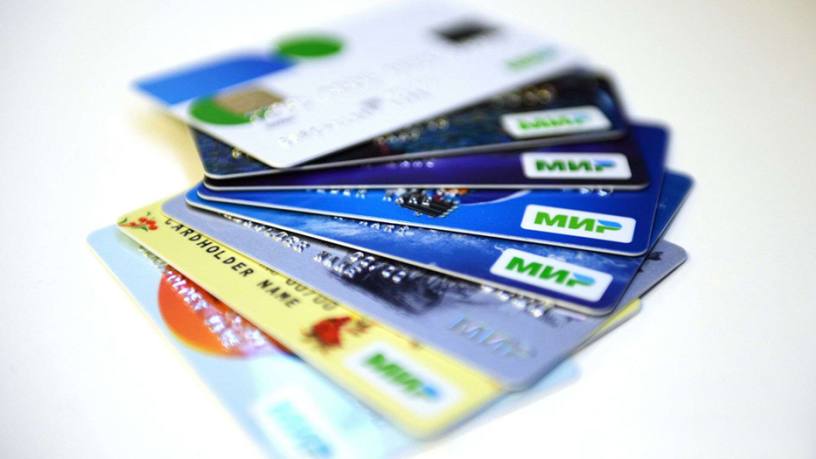When Russian president Vladimir Putin held his annual telethon with voters in June 2021, he was quick to emphasise the country’s ability to thrive in spite of US sanctions. As an idea, it is not without merit: Russia’s economy has performed admirably in recent years, helped by prudent fiscal and monetary policies, as well as regulatory efforts to strengthen the banking system. That much of this success has come in the aftermath of US and EU sanctions, imposed in response to Russia’s annexation of Crimea in 2014, underscores the basic truth behind Mr Putin’s claim. By creating what has been dubbed ‘Fortress Russia’, the Kremlin has engineered a high degree of domestic autonomy for the national economy and, by extension, mitigated the cost of sanctions imposed by foreign actors.
Making Mir
The stunning success of Russia’s national payment system is a case in point. In 2014, several Russian banks were cut off from the Visa and Mastercard payment networks as a result of the sanctions. Not only did this sever the lenders’ ability to process payments on these networks, but it also alerted the Russian government to the risks of depending on US payment groups to serve the national economy. In response, the Kremlin launched an unprecedented effort to develop and mature a domestic payment solution, effectively from scratch. Though some studies of a national scheme were conducted in the early 2000s — before being shelved after the global financial crisis — work started in earnest in late 2014.
Digital payment rails are becoming more important to national economies and how they control their payment ecosystems
Known as ‘Mir’, the development trajectory of Russia’s national payment system has been astronomical. The first Russian banks began issuing Mir cards under a pilot project in late 2015. A year later, more than 1.75 million cards had been issued, jumping to 19 million by the final quarter of 2017, according to data from state news agency TASS. This trend has only accelerated: at the start of 2018, about 30 million cards had been issued, reaching just short of 100 million by June 2021, according to figures from the Russian National Payment Card System.
“It’s been a phenomenal success story. It would never have happened [so quickly] had it not been for the sanctions regime. Now Russia has a strategic asset which is controlled and run from within the country,” says Peter Keenan, founder and chief executive of Apexx Global, a payments gateway business.
Government intervention
Today, Mir boasts a marketshare of more than 25% in terms of total payment transaction value in Russia, according to figures published by GlobalData. This startling growth story is what marks Mir out from other domestic payment initiatives. Although other markets have generated their own national payment schemes to circumvent America’s payment giants, none have matched Mir’s achievements over such a short time period. In this sense, the intervention of the Russian government has played an outsized role in pushing Mir forward.
“One of the challenges of setting up a new payment scheme is that on one side of the ecosystem you need millions of customers with the card wanting to pay, and on the other side you need lots of shops and websites who will accept it. And you need to grow both at the same time,” says Mr Keenan.
“This is what has been so spectacular about it, because what they’ve been able to do in Russia is grow both sides of the ecosystem exponentially — to the point where pretty much every website and shop in Russia now accepts it, and nearly every adult in Russia has a Mir card. What has driven this success has been the Russian government backing it,” he says.
To achieve this growth, the Russian government has mandated that Russian lenders work on the integration of Mir payments as a priority, at the expense of other projects. In addition, the incomes of state employees — from nurses to civil servants — are required to be paid into bank accounts that are affiliated with Mir cards. This is on top of rules that require merchants above a given turnover to accept Mir payments, with the threshold for this being lowered over time.
Beyond these measures, the Russian authorities have also taken care to make Mir more attractive across the payment ecosystem. “[Another step] the Russian government has taken to improve adoption is to lower interchange fees to reduce the cost of payments on the Mir network,” says Ciaran Chu, practice lead for public cloud at ACI Worldwide. Interchange fees for Mir payments are currently set at 0.8% on debit cards and 1.3% on credit cards, well below foreign payment schemes operating in Russia.
International expansion
As the Mir system has gained traction domestically, it is starting to generate its own payments orbit internationally. The flow of Russian tourists to countries across the former Soviet Union and north Asia, as well as Turkey, who are looking to use their Mir cards, has played a part in this story. But so too has the system’s cost-effective nature and the drive for financial inclusion across much of central Asia. As regional governments look to reduce cash payments, they are turning to Mir as a means of doing so while promoting financial inclusion.
“Mir payments are accepted in 11 countries and, with the exception of Turkey, a lot of those markets have quite a low level of card payments. So, there’s a financial inclusion angle to this,” says Mr Chu.
Take Tajikistan for example: in February 2020, the Tajik authorities announced the acceptance of Mir cards on the national payment network, Korti Milli. Over the longer term, it is envisaged that constituent members of Korti Milli will issue their own Mir cards for customers to use in the country and across the wider region, according to comments from Sergey Bochkarev, deputy director general of the Mir payment system.
As such, the swift expansion of Mir payments in Russia and beyond points to the growth of something akin to a Eurasian payments network that is entirely independent of Western solutions. With Moscow at the heart of this system, it is a clear example of Russian soft power prevailing across the region at the expense of the US and its card duopoly. Although Mir is unlikely to achieve a truly global scale, its reach is growing, including through agreements with other leading payment platforms, such as China’s Alipay.
“The bit that they have been clever on is the tie-up with Alipay. This increases the relevance of Mir payments beyond Russia and some of its immediate neighbours. The fact that you can actually transfer it to selected partners, like Alipay, is significant,” says Mr Chu.
Looking ahead, the acceptance of Mir payments will only expand over the coming years, albeit to a far lesser extent than many of the incumbent global offerings. Yet, Mir’s significance has more to do with what it represents. For one, as Mr Keenan from Apexx Global argues, it offers a template for other jurisdictions to follow in terms of the rapid development of an indigenous payment system. That coordinated state backing can produce a payment scheme on this scale will not have gone unnoticed elsewhere in the world. Not only is a system of this nature cheaper than global alternatives, but it also keeps payment revenue pools entirely domestic, while shielding governments from potentially punitive sanctions.
“These digital payment rails are becoming more important to national economies and how they control their payment ecosystems, as cash is used less and less,” says Mr Keenan.
It also underscores the idea that the global economy is becoming increasingly parcellated. In this sense, the move away from globalisation towards more regional and domestic structures, from supply chains to payment networks, is taking full effect. As such, the growth of Mir can be seen in the context of other domestic and regional payment schemes, including the European Payments Initiative, which aim to secure the autonomy of these vital networks. In the hunt for strategic leverage, all eyes are now on payment systems.













